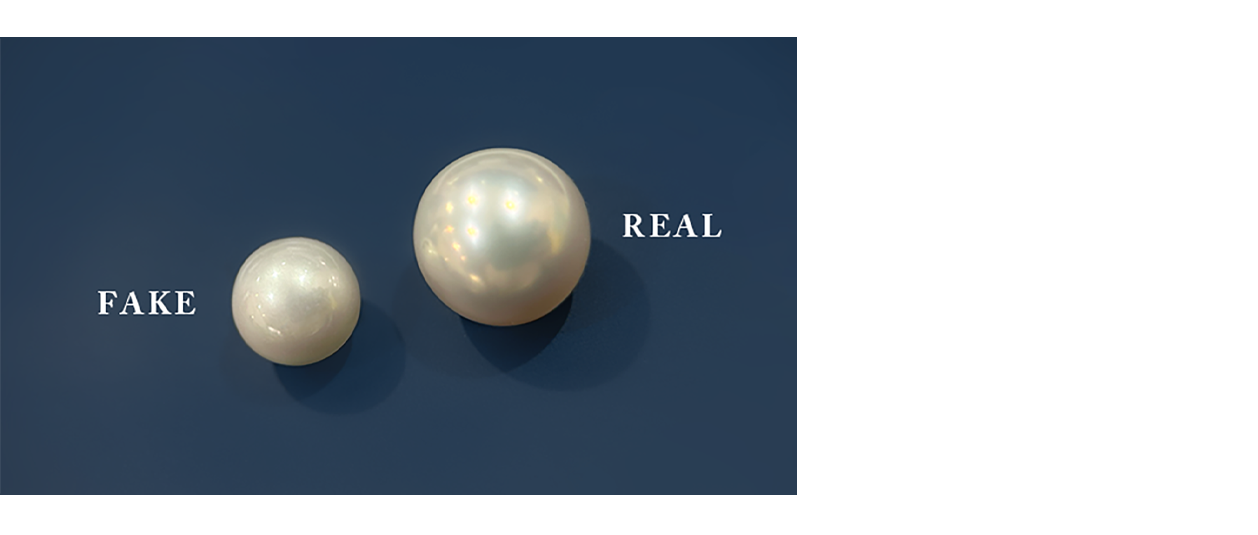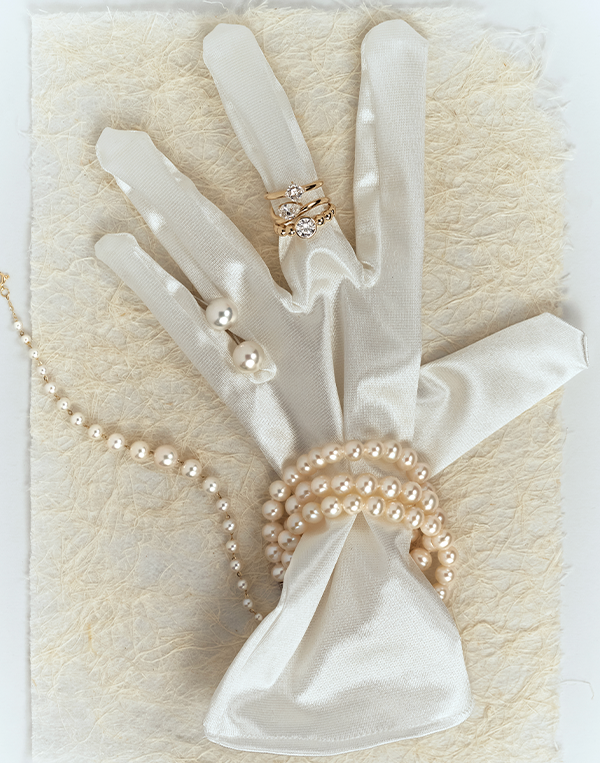Spotting the difference between real and fake pearls is essential, especially if you're considering investing in a piece of pearl jewelry. While some imitations can be quite convincing, there are several methods to determine a pearl's authenticity:
1.LUSTER
a. Real Pearls: Genuine pearls, whether natural or cultured, have a deep, rich luster. They possess a unique radiance that emanates from within, often with overtones of different colors on their surface.
b. Fake Pearls: Typically have a shiny but shallow surface. The luster of imitation pearls is more uniform and often appears glassy.

2.SURFACE IMPERFECTIONS
a. Real Pearls: Due to their organic nature, real pearls usually have some irregularities or minor blemishes on their surface. These imperfections can be seen as proof of authenticity.
b. Fake Pearls: Imitations, especially those made from glass or plastic, tend to be more uniformly round and smooth, lacking the characteristic imperfections of genuine pearls.
3.TOOTH TEST
a. Real Pearls: Gently rubbing a pearl against the edge of your tooth will give it a slightly gritty or sandy feel, similar to fine sandpaper. This is due to the layered nacre structure of the pearl.
b. Fake Pearls: Will generally feel smooth when rubbed against a tooth.

4.TEMPERATURE
a. Real Pearls: They are good insulators and will feel cool to the touch initially, warming up when worn against the skin.
b. Fake Pearls: Usually adjust more quickly to the surrounding temperature and may not have that initial cool feel.

5.WEIGHT
a. Real Pearls: Tend to feel heavier for their size because of their dense nacre composition.
b. Fake Pearls: Particularly those made from plastic, will feel lighter.

6.ELASTICITY TEST
a. Real Pearls: When tapped lightly with a metal object, they produce a distinctive, resonant sound.
b. Fake Pearls: Produce a duller, more muted sound.
7.DRILL HOLES
a. Real Pearls: The drill holes tend to be small with a concentration of nacre layers visible inside.
b. Fake Pearls: Often have larger drill holes with paint or coating possibly chipping or peeling around that area.

8.X-Ray (For Professionals)
a. Real Pearls: Will show a concentric growth pattern and often a central nucleus.
b. Fake Pearls: Will not have these growth rings.
9.PRICE
a. Real Pearls: Are generally more expensive, especially if they are of high quality, large size, or rare type.
b. Fake Pearls: Are considerably cheaper.
10.CERTIFICATE OF AUTHENTICITY
Reputable jewelers often provide a certificate of authenticity with real pearls, detailing their origin, type, size, and quality.
When in doubt, especially for a significant purchase, it's always best to consult with a reputable jeweler or gemologist who can perform specialized tests to determine the pearl's authenticity.












